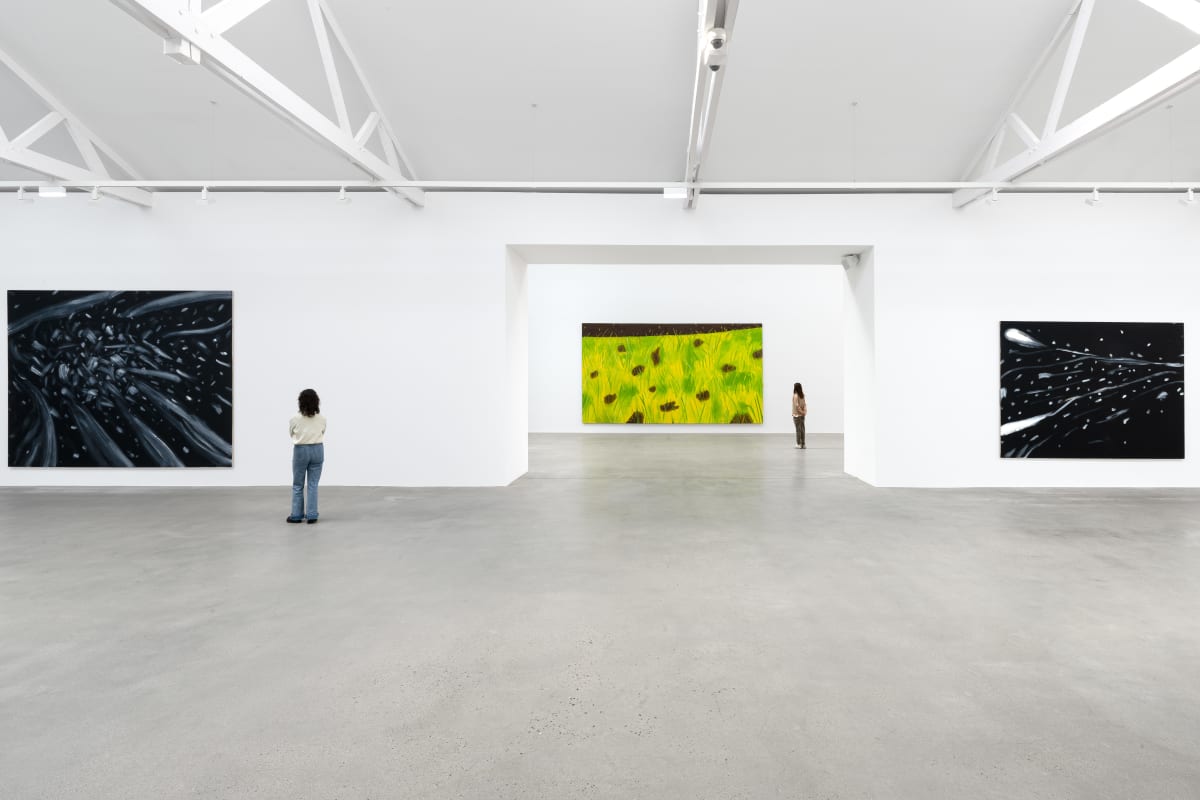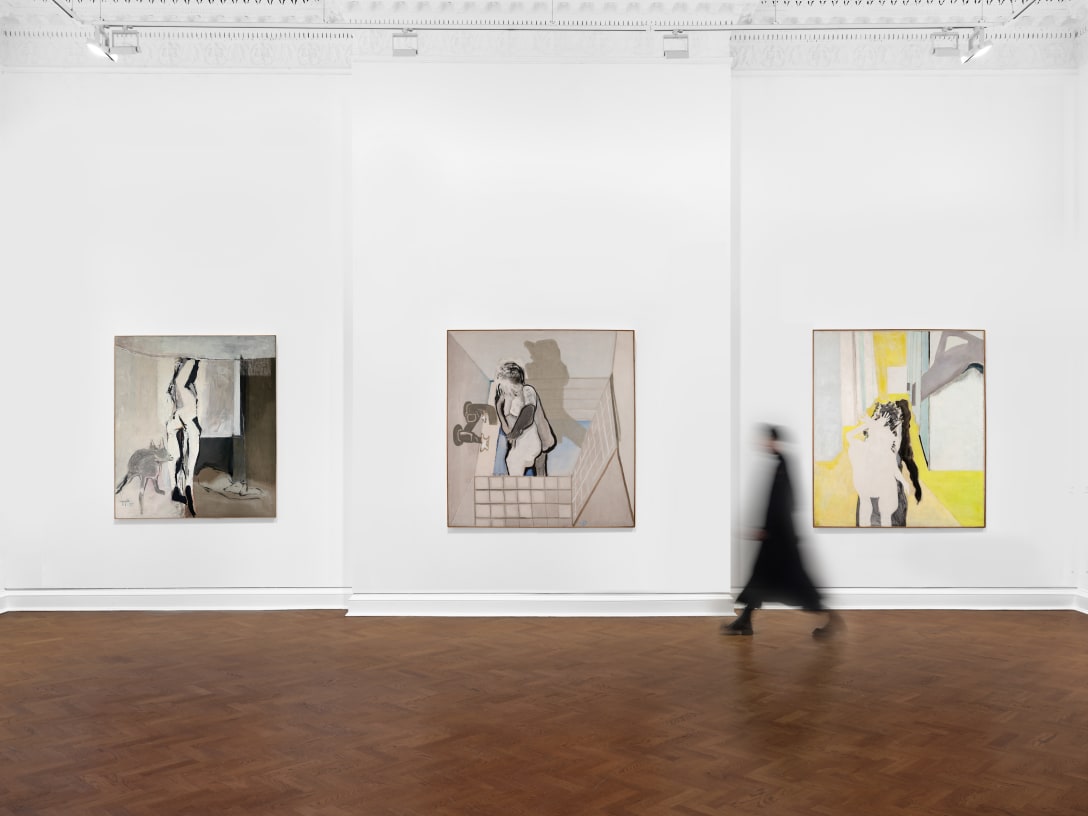

Overview
With their subtly reflective surfaces, the Borealis paintings change according to each viewpoint, alluding to the ever-changing landscape of modernity.
In collaboration with the Robert Rauschenberg Foundation, Galerie Thaddaeus Ropac Salzburg is pleased to announce an exhibition dedicated to Robert Rauschenberg’s Borealis series. Made between 1988 and 1992 in Captiva, Florida, the Borealis are considered to be one of Rauschenberg’s most experimental and innovative series.
In these works, Rauschenberg characteristically silk-screened photographs taken during his ROCI tour (Rauschenberg Overseas Culture Interchange, 1984–91) onto brass, copper and bronze plates, adding tarnishing agents which would produce chemical reactions on the surface and alter the perception of the motifs. With their subtly reflective surfaces, the Borealis paintings change according to each viewpoint, alluding to the ever-changing landscape of modernity.
Between 1984 and 1991 Robert Rauschenberg embarked on the ROCI project, travelling the world and exhibiting in eleven countries where artistic experimentation had been suppressed, including Chile, China and Cuba. During these trips, the artist had numerous encounters and made discoveries that allowed him to develop a new body of work, which brought together characteristic elements of his practice: photography, silkscreening, painting and experimental techniques.
After his trip to Chile, where he visited a copper mine and a foundry, Rauschenberg started to experiment with copper. Fascinated by this reflective material, he created what he called ‘corrosions’ by applying tarnishing agents, such as acetic acid and ammonium salts, with gestural strokes over images silkscreened on sheets of brass, bronze and copper. This process produces an effect that is both murky and lustrous so that, as he explained, ‘the metal carries the image instead of the opposite way around, where the paint is the image on the surface.’ By painting or drawing with a tarnish-resistant medium before applying the tarnishing agent, the artist could create colouristic variations, resulting in a luminous tonal range that varies from green to blue, and red to brown and black, depending on the metal’s own properties. This technique allowed for an element of chance, which Rauschenberg had always favoured since his early years and his friendships with Marcel Duchamp and John Cage.
The title of the series alludes to the aurora borealis (popularly called the ‘Northern lights’), which appears in the Northern Hemisphere as a diffuse glow of vivid colour in the night sky. Rauschenberg had first seen this phenomenon while travelling in Sweden and later, referring to his Borealis series, he said: ‘I thought that word should be the title for these corrosions.’
While in his earlier series the artist would source images from magazines and newspapers, for the Borealis he used his own photographs, taken during the ROCI project: from Berlin Wall graffiti, to road signs in New York, storefronts in Japan, the clock at the Gare d’Orsay in Paris or farm animals, to name a few.
In some of the works the imagery is dense, in others it is concentrated in specific areas, leaving part of the material bare and overlaid with Rauschenberg’s gestural brushwork. Each composition shows incidental gestures, including wipes and drips, streaks, washes and spots. In some instances the tarnish obscures and even obliterates the images, playing the familiar Rauschenbergian game of concealing and revealing, veiling and disclosing.
No specific narrative can be inferred from the figurative motifs in the Borealis series. As curator Corinna Thierolf postulates in the catalogue essay accompanying the exhibition:
“When considering the mysterious, glowing atmosphere of these images – with their vaguely discernible motifs of traffic signs, newspaper cuttings, views of buildings with reflective façades, vehicles, radio stations, information boards, animals or plants – it is also likely that he saw an analogy to the changing light processes in the natural world.”
Rauschenberg’s Borealis paintings are indicative of his technical prowess that nevertheless makes room for the unpredictable. The Borealis series succeeds Andy Warhol’s Oxidation Paintings from the 1970s and can be seen in the context of the alchemical turn in the late 1980s, when artists such as Sigmar Polke expressed a particular interest in the transformative power of light and materials. The Borealis soon became a highlight of Rauschenberg’s 1980s–90s production, with works entering the collections of major institutions, notably the Ludwig Museum in Cologne, the Kunstsammlung Nordrhein-Westfalen in Dusseldorf and the Bayerische Staatsgemäldesammlungen in Munich.
A fully illustrated catalogue with an essay by Dr. Corinna Thierolf, Curator of the Contemporary Art Department of Pinakothek der Moderne, Munich, accompanies the exhibition.











































































































































































